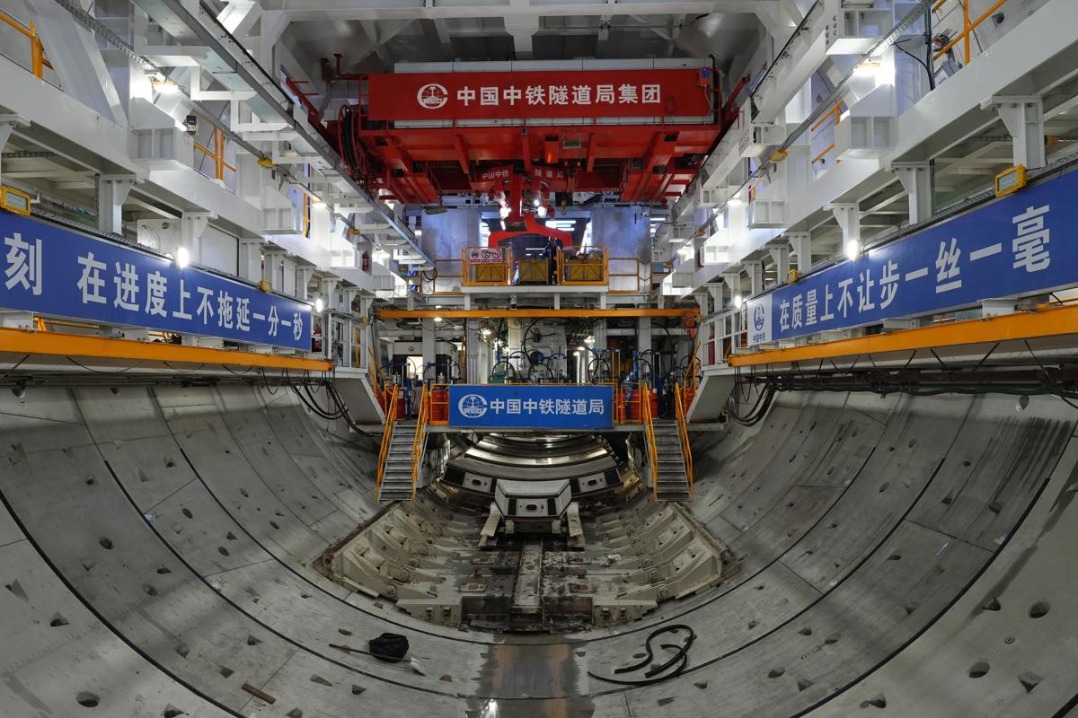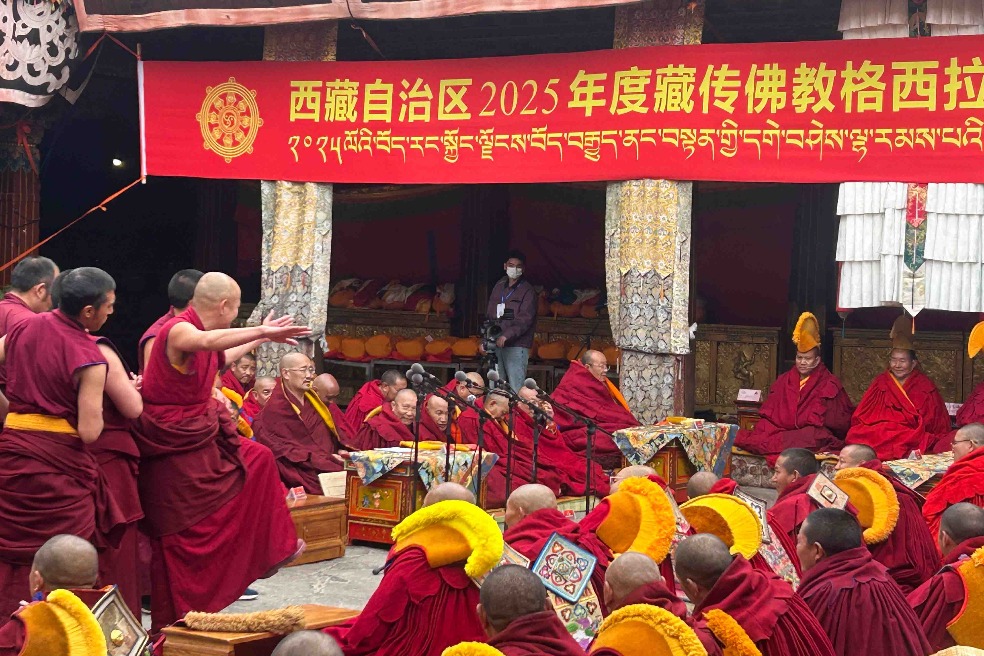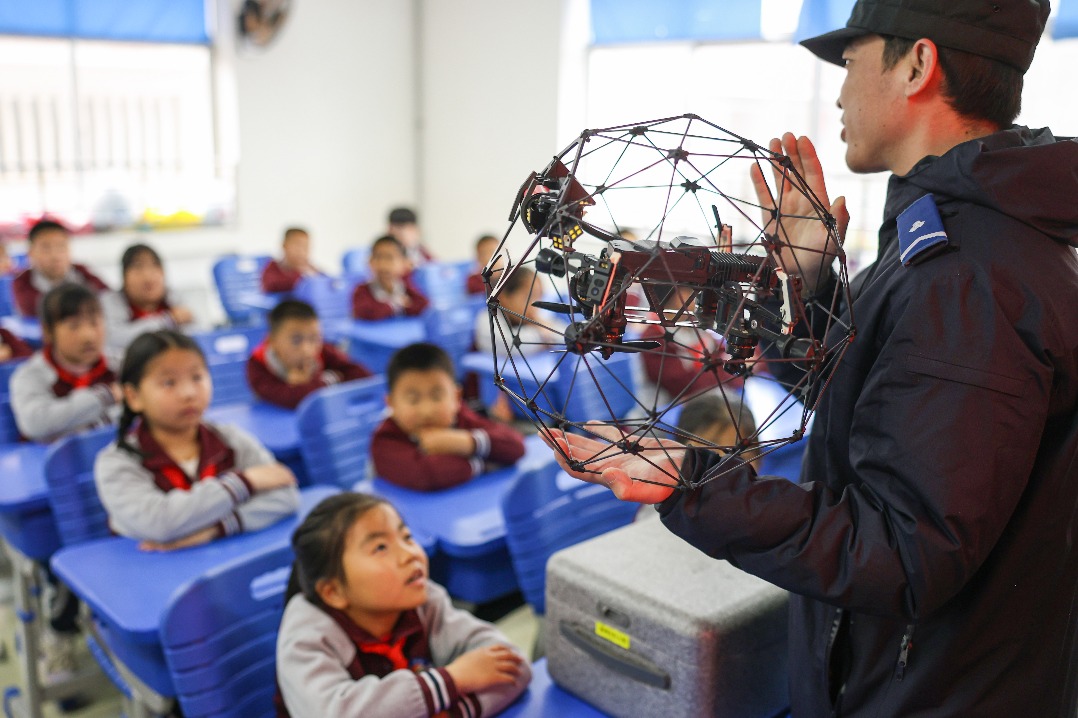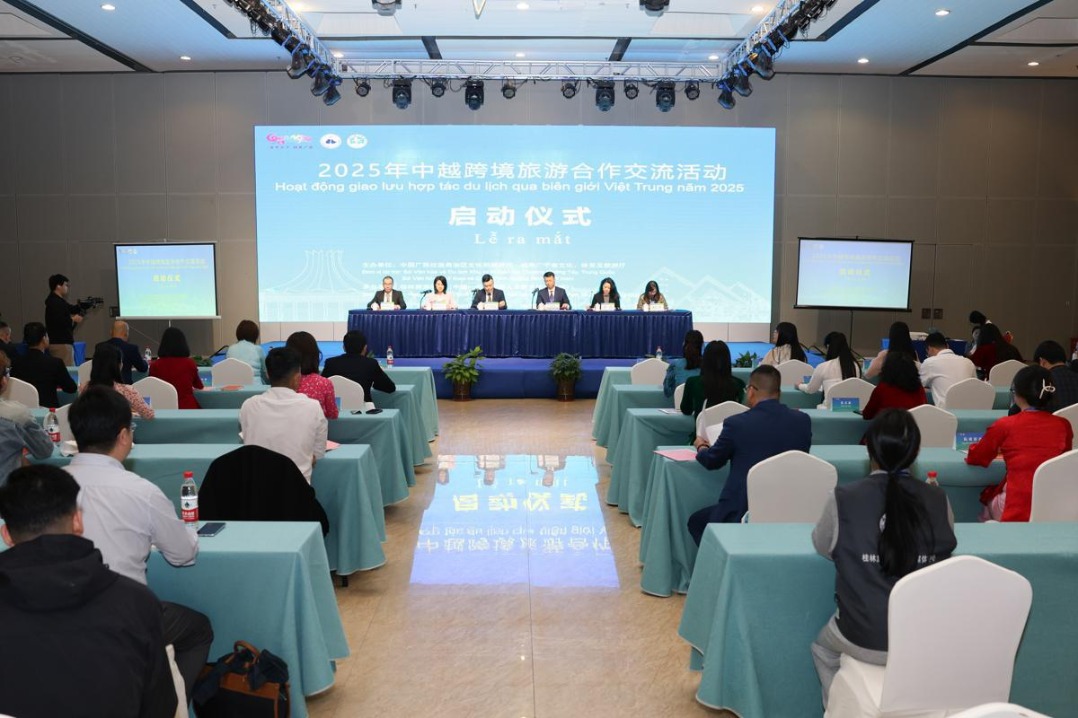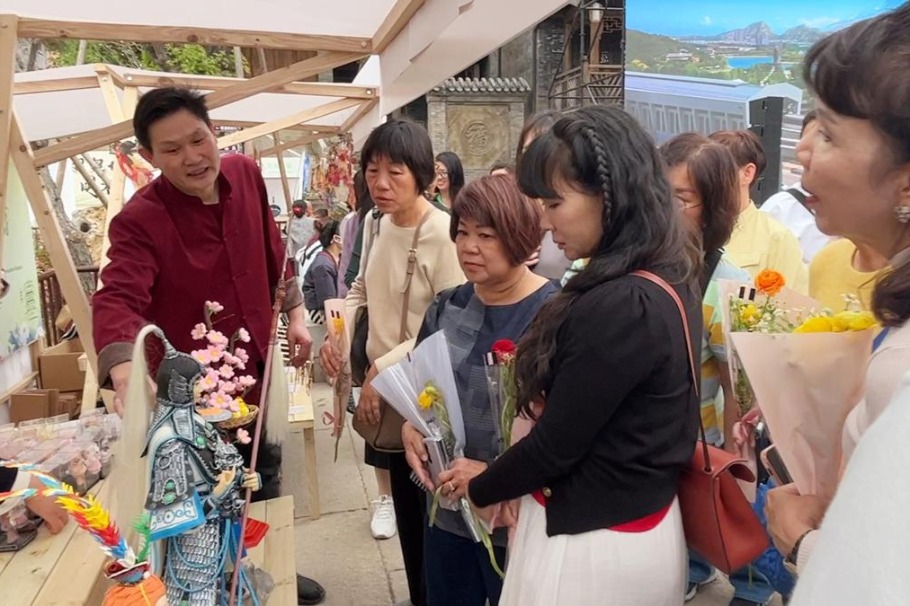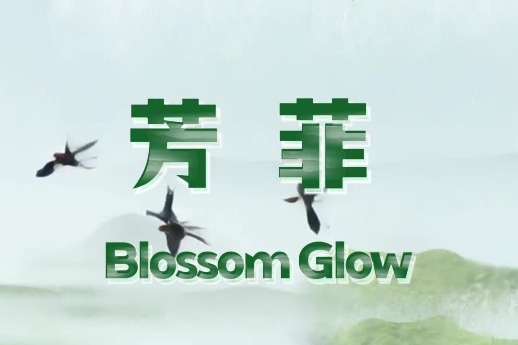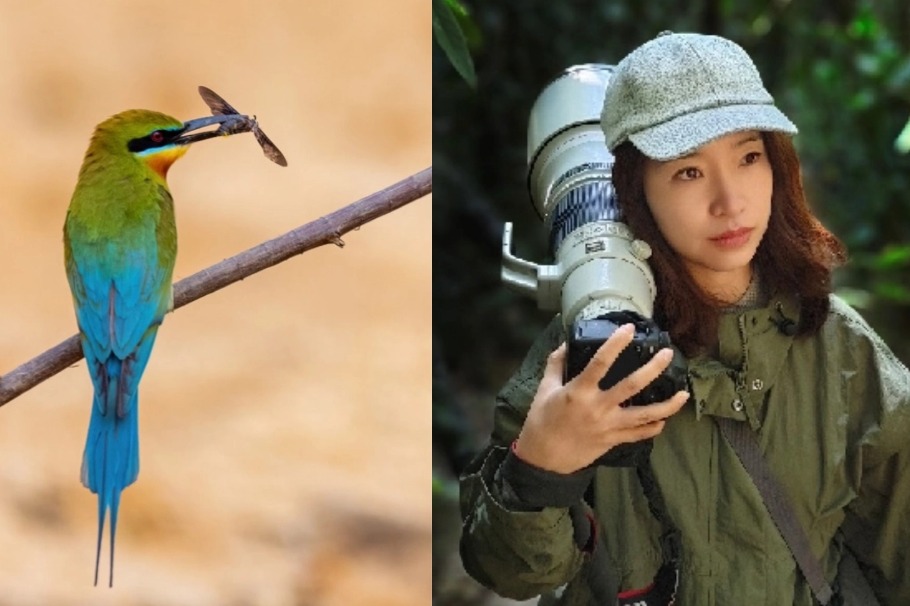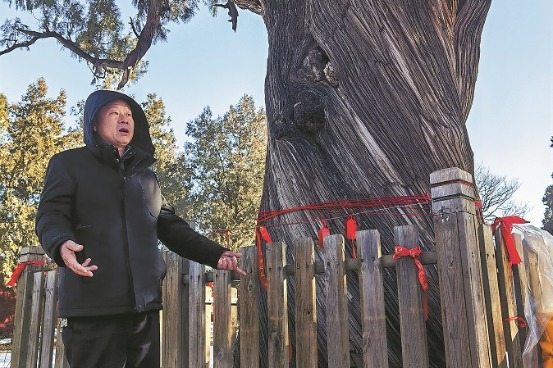Foreign Buddhist practitioners visit key Tibetan sites

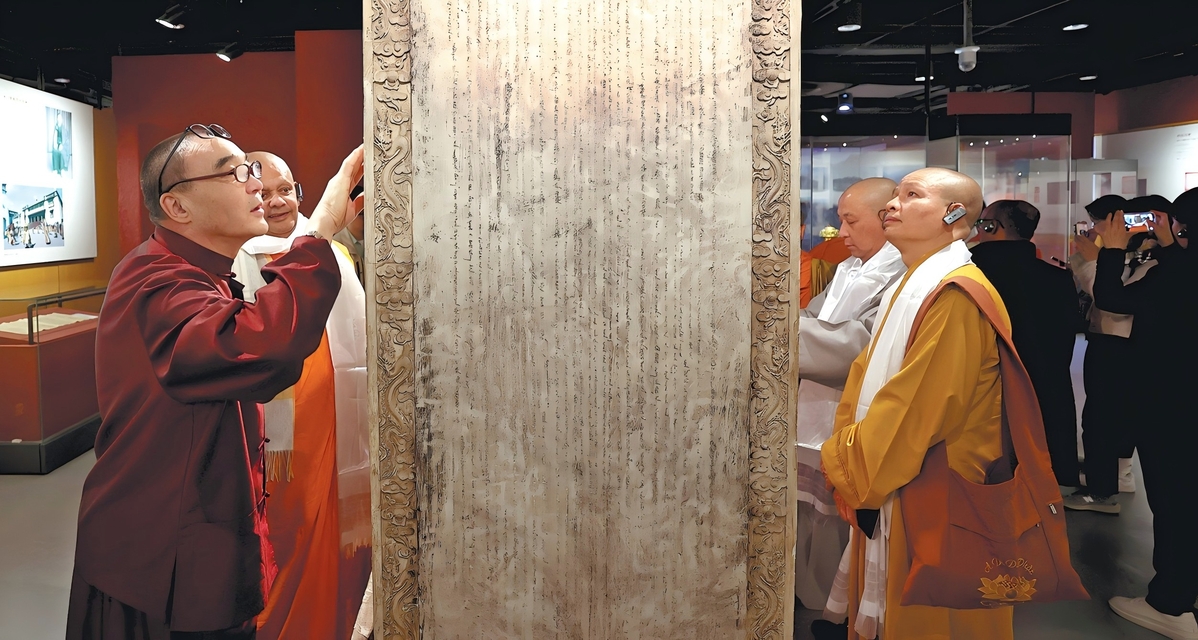
Foreign Buddhist practitioners and religious affairs officials said visits to key Tibetan sites and research institutions in China this week have deepened their understanding of the reincarnation system of Living Buddhas and the development of Tibetan Buddhism in the country.
More than 20 monks and officials from 12 countries visited the Lama Temple and the China Tibetology Research Center in Beijing, as well as the Sera Monastery, Potala Palace, Jokhang Temple and Tibet University in Lhasa, capital of the Xizang autonomous region, from Monday to Wednesday.
At the Lama Temple, monks expressed strong interest in the Discourse of Lama, an inscription carved in Manchu, Han, Mongolian and Tibetan. Written by Emperor Qianlong of the Qing Dynasty (1644-1911), the piece outlines the policy of selecting reincarnated Living Buddhas through a lot-drawing process using a golden urn.
Emperor Qianlong granted two golden urns in 1792, placing one at the Lama Temple in Beijing and the other at the Jokhang Temple in Lhasa. The current procedure for identifying reincarnated Living Buddhas in China has been standardized and legalized based on historical practice, according to Hu Xuefeng, abbot of the Lama Temple.
"According to the procedure, the reincarnation of a Living Buddha must be carried out in China and approved by the central government," Hu said during a briefing on the temple's history and development.
Lharkyal Lama, vice-chairman of Nepal's Lumbini Development Trust, said Living Buddhas play a vital role in promoting Tibetan Buddhism and that their reincarnation has a long and rich history.
After viewing an exhibition on the reincarnation of Living Buddhas — including the Dalai Lama and Panchen Lama — at the Museum of Tibetan Culture at the China Tibetology Research Center, Penh Vibol, a member of the Secretariat of the Supreme Sangha Council of Cambodia, said the visit helped him better understand the background of the reincarnation tradition in China.
"I think it's a very good lesson and experience for us to come here and learn about the reincarnation story," Vibol said.
Monks said they were also pleased to see that Buddhist heritage sites and relics are well protected and that Buddhism remains vibrant in China.
"The Lama Temple is a symbol of cultural connection between many different places," said Lharkyal Lama. "You can see scriptures in different languages, including Tibetan and Chinese, and the architecture and relics have been beautifully preserved."
Phra Sophonvachirabhorn, assistant abbot of Wat Arun Ratchawararam in Thailand, said he was surprised to see so many young people worshiping at the Lama Temple.
Hu, the abbot, said the temple receives an average of 20,000 visitors and worshipers daily — a sign that religious freedom is fully protected in the country.
Nguyen Van Tan, a member of the General Buddhist Association of Vietnam, said he was impressed by the grandeur of the Sera Monastery in Lhasa. "I'm glad to have the opportunity to visit it for the first time. There are so many worshipers here, which shows that Buddhism has been well promoted," he said.
Mendbayar Demberel, an abbot from Mongolia, said he had in-depth exchanges with local Buddhist practitioners during visits to the Sera Monastery, Potala Palace and Jokhang Temple, which he described as both pleasant and fruitful.
Jampa Choipel, a monk from the Sera Monastery, said the number of visitors from both China and abroad has grown in recent years.
"Such exchanges have boosted understanding of Buddhism among practitioners from different parts of the world," he said. "Together, we can contribute more to the harmonious development of local communities."
Contact the writers at cuijia@chinadaily.com.cn
















